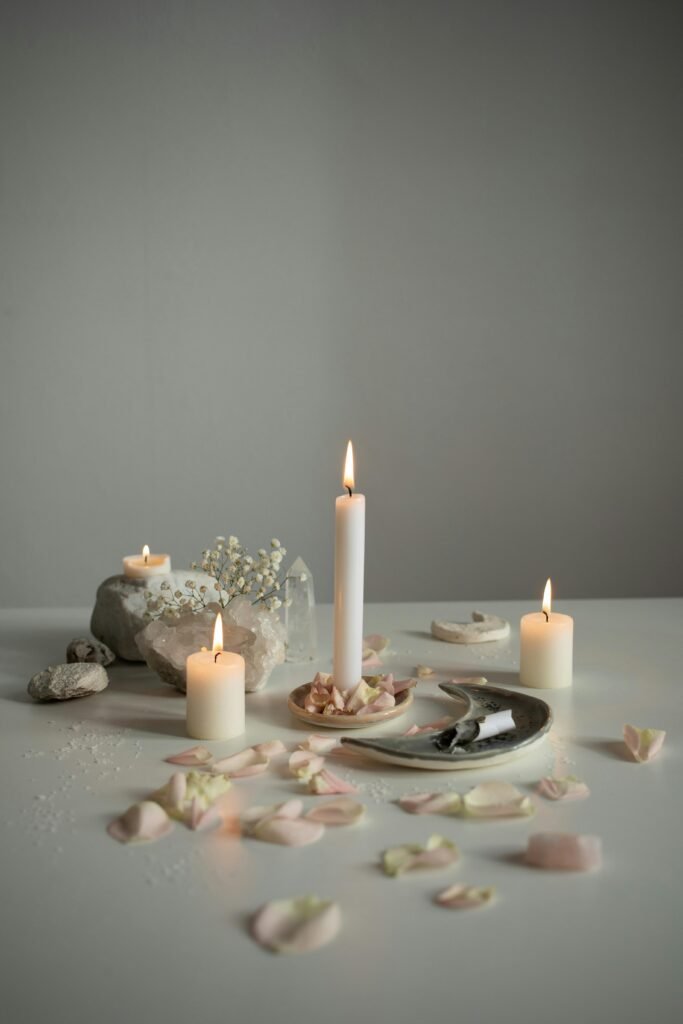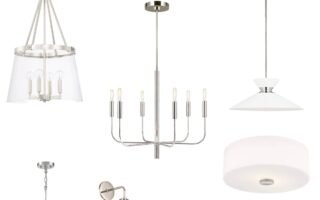In today’s article, we will explore the fascinating world of biophilic lighting and its numerous benefits when incorporated into interior design. Biophilic lighting, a growing trend in the industry, seeks to recreate the natural light and elements found in nature within indoor spaces. By bringing the outdoors in, this innovative lighting design not only enhances the aesthetic appeal of a room but also contributes to the well-being and productivity of its inhabitants. Join us as we delve into the captivating world of biophilic lighting and discover how it can transform your living or working environment for the better.
Enhancing Mood and Well-being
Reducing stress and anxiety
Biophilic lighting in interior design has been shown to have a positive impact on reducing stress and anxiety. By incorporating elements of nature, such as natural light and organic shapes, into indoor spaces, biophilic lighting creates a soothing and calming environment. The soft and diffused lighting helps to create a sense of tranquility, which can help to alleviate stress and promote relaxation. Additionally, the connection to nature that biophilic lighting provides can help to reduce anxiety and improve overall well-being.
Improving mood and productivity
One of the key benefits of biophilic lighting in interior design is its ability to improve mood and productivity. By mimicking natural lighting conditions, biophilic lighting helps to regulate circadian rhythms, which can have a significant impact on mood and energy levels. When exposed to natural light, the body’s production of serotonin, a hormone that promotes a sense of happiness and well-being, increases. By using biophilic lighting techniques, such as adjustable lighting that simulates natural daylight, you can enhance mood and increase productivity.
Promoting relaxation and restful sleep
Another advantage of biophilic lighting in interior design is its ability to promote relaxation and enhance sleep quality. By incorporating lighting fixtures that mimic the subtle variations in natural light throughout the day, biophilic lighting helps to regulate sleep-wake cycles. This promotes a more restful and rejuvenating sleep, leading to improved overall well-being. Additionally, the calming and soothing effects of biophilic lighting create a peaceful and serene environment that is conducive to relaxation.
Increasing Connection to Nature
Creating a sense of connection to the natural world
One of the primary goals of biophilic lighting in interior design is to create a sense of connection to the natural world. By incorporating elements such as natural materials, plants, and views of nature, biophilic lighting helps to bring the outdoors inside. This connection to nature has been shown to have numerous benefits, including reducing stress, improving mental well-being, and increasing overall happiness. By surrounding yourself with biophilic lighting, you can create an environment that promotes a deep and meaningful connection to nature.
Bringing the outdoors inside
Biophilic lighting techniques allow for the integration of natural elements into indoor spaces, effectively bringing the outdoors inside. By incorporating features such as daylighting, which utilizes natural light to illuminate indoor spaces, or using lighting fixtures that imitate the patterns and colors found in nature, biophilic lighting creates a seamless transition between the indoor and outdoor environments. This not only enhances the aesthetics of the space but also allows for a deeper connection to nature while indoors.
Fostering a biophilic environment
Creating a biophilic environment goes beyond just incorporating natural elements and lighting. It is about creating a space that fosters a deep and meaningful connection to nature. In addition to biophilic lighting, other elements such as natural ventilation, indoor plants, and the use of sustainable materials can contribute to the overall biophilic experience. By incorporating these elements into interior design, you can create a harmonious and balanced indoor environment that promotes well-being and connectivity to nature.

Enhancing Visual Comfort
Reducing glare and eye strain
Biophilic lighting in interior design can significantly reduce glare and eye strain, resulting in enhanced visual comfort. By utilizing lighting fixtures that distribute light evenly and minimizing intense light sources, biophilic lighting creates a more gentle and natural lighting environment. This helps to reduce the discomfort and fatigue associated with glare and eye strain, allowing for a more comfortable and enjoyable visual experience.
Mimicking natural lighting conditions
One of the key aspects of biophilic lighting is its ability to mimic natural lighting conditions. Natural light is dynamic and constantly changing, with subtle variations throughout the day. By incorporating adjustable lighting fixtures, such as dimmers or tunable white lights, biophilic lighting can replicate these variations, creating a more realistic and comfortable lighting environment. This not only enhances visual comfort but also helps to regulate circadian rhythms and promote a sense of well-being.
Providing a soothing and comfortable visual experience
Biophilic lighting aims to create a soothing and comfortable visual experience by utilizing soft and diffused lighting. Unlike harsh and artificial lighting sources, biophilic lighting provides a more natural and gentle illumination, which helps to reduce eye strain and create a more relaxing environment. The soft and warm glow of biophilic lighting promotes a sense of comfort and tranquility, enhancing the overall visual experience and contributing to a more pleasant and inviting space.
Improving Health and Circadian Rhythms
Regulating sleep-wake cycles
Biophilic lighting has a significant impact on regulating sleep-wake cycles. By mimicking the natural variations in light intensity and color temperature throughout the day, biophilic lighting helps to synchronize the body’s internal clock, or circadian rhythms. This promotes a more regular sleep-wake cycle, leading to improved sleep quality and overall health. By incorporating biophilic lighting techniques into interior design, you can create an environment that supports healthy sleep patterns and promotes overall well-being.
Promoting a healthy hormonal balance
Biophilic lighting has been shown to promote a healthy hormonal balance by regulating the production of key hormones such as melatonin and serotonin. Melatonin is responsible for regulating sleep, and exposure to natural light helps to maintain a healthy balance of this hormone. Additionally, biophilic lighting promotes the production of serotonin, a hormone that regulates mood and promotes a sense of well-being. By incorporating biophilic lighting into interior design, you can help to support a healthy hormonal balance and improve overall health.
Boosting energy and alertness during the day
By regulating circadian rhythms, biophilic lighting helps to boost energy and alertness during the day. Exposure to natural light has been shown to increase alertness and cognitive performance, leading to improved productivity and overall well-being. By incorporating biophilic lighting techniques, such as daylighting or adjustable lighting fixtures that simulate natural daylight, you can create a more energizing and stimulating environment that enhances focus and performance.

Boosting Productivity and Performance
Increasing focus and concentration
Biophilic lighting has a significant impact on increasing focus and concentration. By providing a well-lit and visually comfortable environment, biophilic lighting helps to reduce distractions and promote mental clarity. The soft and diffused lighting creates a calm and soothing atmosphere, allowing individuals to maintain their attention and stay focused on tasks. By incorporating biophilic lighting techniques into interior design, you can create a space that enhances focus and improves overall productivity.
Enhancing cognitive performance
Studies have shown that exposure to natural light can enhance cognitive performance. By incorporating biophilic lighting techniques, such as adjustable lighting fixtures that mimic natural daylight, interior spaces can benefit from the positive effects of natural light on cognitive function. Improved cognitive performance can lead to better problem-solving skills, increased creativity, and enhanced decision-making abilities. By integrating biophilic lighting into interior design, you can create an environment that fosters cognitive performance and promotes overall productivity.
Improving task efficiency and accuracy
Biophilic lighting has been shown to improve task efficiency and accuracy. By providing adequate and appropriate lighting, individuals are better able to see and perform tasks with greater ease and accuracy. The soft and diffused lighting of biophilic lighting techniques helps to reduce glare and optimize visual comfort, allowing individuals to focus on tasks without the distraction of visual discomfort. By incorporating biophilic lighting in interior design, you can create a space that supports efficient and accurate task performance.
Creating a Sense of Space and Depth
Enhancing the perception of depth and dimension
Biophilic lighting techniques can enhance the perception of depth and dimension in interior spaces. By strategically placing lighting fixtures to highlight architectural features or using lighting to create shadows and highlights, the sense of space and depth within a room can be enhanced. This creates an illusion of a larger and more expansive space, making the room feel more open and inviting. By incorporating biophilic lighting techniques, you can transform small or confined spaces into visually engaging environments.
Enlivening small or confined spaces
Biophilic lighting is particularly effective at enlivening small or confined spaces. By utilizing lighting fixtures that provide a soft and diffused illumination, biophilic lighting helps to create a more spacious and open atmosphere. Additionally, by incorporating adjustable lighting or using lighting techniques that create different levels of lighting, such as layering lights at varying heights, the visual interest and depth within the space can be enhanced. This creates a more dynamic and engaging environment, making small or confined spaces feel more welcoming and vibrant.
Creating a visually engaging environment
Biophilic lighting techniques help to create a visually engaging environment by utilizing lighting to highlight architectural features and materials. By strategically positioning lighting fixtures to accentuate textures, patterns, and details, the aesthetic qualities of a space can be enhanced. This draws attention to the unique characteristics of the space and showcases the beauty of natural materials. By incorporating biophilic lighting in interior design, you can create a visually captivating environment that enhances the overall aesthetic appeal of a space.

Highlighting Architectural Features and Materials
Accentuating textures, patterns, and details
Biophilic lighting can be used to accentuate the textures, patterns, and details of architectural features and materials. By strategically placing lighting fixtures to highlight specific elements, such as a textured wall or a unique pattern on a floor, biophilic lighting draws attention to the intricate details and enhances their visual impact. This helps to create a more visually interesting and dynamic space, showcasing the beauty and craftsmanship of architectural features and materials.
Enhancing the aesthetics of the space
Incorporating biophilic lighting in interior design can greatly enhance the overall aesthetics of a space. By utilizing lighting fixtures that provide a warm and inviting glow, biophilic lighting helps to create a visually pleasing atmosphere. The soft and diffused lighting creates a sense of coziness and comfort, making the space more appealing and inviting. Additionally, by highlighting the architectural features and materials of the space, biophilic lighting further enhances its overall aesthetic qualities, creating a visually stunning environment.
Showcasing the beauty of natural materials
Biophilic lighting is particularly effective at showcasing the beauty of natural materials. By utilizing lighting to emphasize the textures and colors of materials such as wood, stone, or metal, the unique qualities of these materials are brought to the forefront. Additionally, by mimicking natural lighting conditions, biophilic lighting helps to enhance the natural characteristics of these materials, such as the grain of wood or the veining of marble. By incorporating biophilic lighting techniques, you can create a space that showcases the natural beauty of materials and creates a visually captivating environment.
Supporting Sustainable Design
Reducing energy consumption and carbon footprint
One of the key principles of biophilic lighting in interior design is its focus on sustainability. Biophilic lighting techniques aim to reduce energy consumption and minimize the carbon footprint associated with lighting. By utilizing energy-efficient lighting fixtures, such as LEDs or compact fluorescent bulbs, biophilic lighting significantly reduces energy consumption compared to traditional lighting sources. This not only lowers energy costs but also contributes to a more sustainable and environmentally friendly design.
Incorporating energy-efficient lighting fixtures
In order to support sustainable design, biophilic lighting incorporates energy-efficient lighting fixtures. LED lighting, in particular, is a popular choice for biophilic lighting due to its high energy efficiency and long lifespan. LED lights consume significantly less energy compared to traditional incandescent or fluorescent bulbs, while also providing a high-quality and versatile lighting source. By incorporating energy-efficient lighting fixtures in interior design, you can contribute to a more sustainable and eco-friendly space.
Aligning with eco-friendly design principles
Biophilic lighting aligns with eco-friendly design principles by promoting sustainable practices and materials. In addition to utilizing energy-efficient lighting fixtures, biophilic lighting also encourages the use of sustainable materials and design practices. This includes using materials that are responsibly sourced or recycled, as well as implementing design strategies that minimize waste and promote environmental stewardship. By incorporating biophilic lighting in interior design, you can support eco-friendly design principles and contribute to a more sustainable future.

Promoting Biophilic Design Principles
Incorporating other elements of biophilic design
Biophilic lighting is just one aspect of a larger design philosophy known as biophilic design. Biophilic design promotes the integration of nature into the built environment in order to enhance well-being and create a more harmonious and balanced indoor environment. In addition to biophilic lighting, other elements of biophilic design include the incorporation of natural materials, the use of indoor plants, and the creation of views and connections to nature. By incorporating these elements in interior design, you can create a truly biophilic space that promotes well-being and connectivity to nature.
Enhancing the overall biophilic experience
The incorporation of biophilic lighting in interior design enhances the overall biophilic experience by creating a more immersive and sensory-rich environment. The soft and diffused lighting, combined with natural materials and views of nature, allows individuals to engage with their surroundings in a more meaningful way. By incorporating biophilic lighting techniques, you can create an environment that stimulates the senses and fosters a deep connection to nature, promoting overall well-being and enhancing the overall biophilic experience.
Creating a harmonious and balanced indoor environment
Biophilic lighting is essential in creating a harmonious and balanced indoor environment. By incorporating elements of nature into interior design, such as natural light, organic shapes, and natural materials, biophilic lighting helps to create a space that is in harmony with its surroundings. This balance between the indoor and outdoor environments promotes a sense of well-being and connectivity to nature. By incorporating biophilic lighting techniques, you can create an indoor environment that is visually engaging, emotionally uplifting, and nurturing to the human spirit.
Conclusion
Biophilic lighting in interior design offers a wide range of benefits for both individuals and the environment. By enhancing mood and well-being, increasing connection to nature, improving health and circadian rhythms, boosting productivity and performance, creating a sense of space and depth, highlighting architectural features and materials, supporting sustainable design, and promoting biophilic design principles, biophilic lighting can transform indoor spaces into environments that are not only aesthetically pleasing but also promote overall well-being. By incorporating natural elements and biophilic lighting techniques, you can create indoor spaces that are nurturing, inspiring, and conducive to a healthier and happier lifestyle. Embrace the power of biophilic lighting and create a space that not only looks beautiful but also enhances your well-being and connection to nature.



